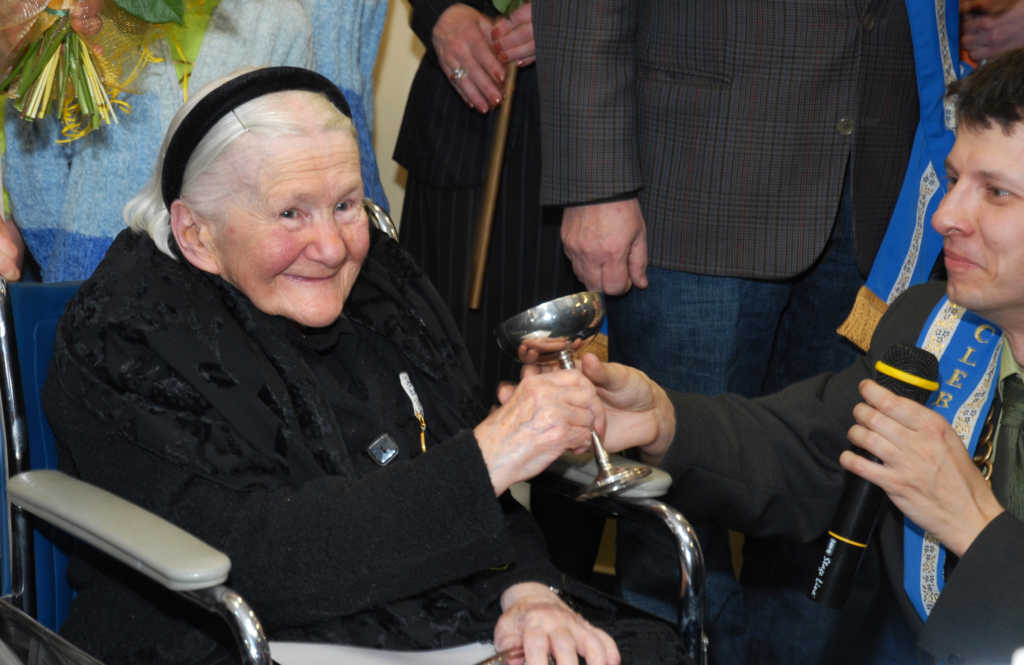A Catholic woman risked her life to smuggle some 2,500 Jewish children to safety during World War II by posing them as Christians.
Dubbed the “female Schindler,” Irena Sendler actually saved more people than Oskar when she ferried them to safety out of a ghetto in Warsaw, Poland, according to the New York Post.
Sendler used coffins, toolboxes and even under coats to conceal the children through an underground network. She would bring them to the homes of Polish gentiles.
The punishment for anyone who helped a Jew was summary death.
A book titled “Irena’s Children” details how Sendler would write each child’s real name on a scroll that she buried under an apple tree, hoping that she would be able to reunite them with their parents after the war ended.

When Germany invaded Poland in 1938, Sendler was working with the Citizen’s Social Aid Committee, an organization that helped unwed mothers. She and her coworkers faked welfare files as a form of resistance, listing made-up names to secure cash, food and clothing to Jewish families whose bank accounts were frozen.
In the files, Sendler would include details about the fictitious families suffering from contagious diseases such as typhus and cholera to dissuade the Nazis from trying to visit them.
After less than two years, Germany began relocating Jewish residents in Warsaw to one of the city’s poorest areas, cramming families into small apartments, with six to seven people to a room. Food rations were reduced to 200 calories a day, and the ghetto was sealed off with bricks and barbed wire.
Armed guards ensured that the 400,000 Jews would stay confined within the ghetto’s walls.
Due to her work, Sendler had access to the ghetto, and she and her accomplices began secretly removing the kids and resettling them, forging birth certificates and having the Jewish children pose as Aryans.
When a Christian child would die in an orphanage, Sendler would ensure that the death was never reported so the identity could be passed on to a Jewish child from the ghetto.
Elzbieta Ficowska was 6 months old when she was smuggled out of a carpenter’s toolbox. The only keepsake she has from her family is a small silver spoon, which she refers to as her “dowry and birth certificate.”
Sendler thought it would be wise to baptize Ficowska and the other infants. Upon hearing this, Ficowska’s grandfather allegedly broke down crying in the street. But a package arrived a few days later containing a lace christening gown and a crucifix – and no note.
“The message was clear,” wrote the author of “Irena’s Children,” Tilar J. Mazzeo. “It was a family’s goodbye to a desperately loved child.”
Sendler was arrested in October 1943 after Nazis stormed her apartment. She was sentenced to death, but on the day of her execution, the underground Polish Council to Aid Jews bribed an officer to let her go.
Sendler spent the rest of the war in hiding, but when it was over, she tried to find the real names she had buried. It was impossible, though, as the city had been destroyed.
She then had to rely on memory to match the children with family living abroad but later found out that 98 percent of their parents had died in the Treblinka concentration camp.
Even after the war, Sendler was a controversial figure in her own country, remaining a person non grata to the Polish Communist government. Yet, she spent the rest of her life there to raise her three children and was eventually recognized as Righteous Among the Nations by the official Holocaust memorial organization, Yad Vashem, in 1965.
Generations of descendants of Holocaust survivors were born due to Sendler’s rescue efforts, Mazzeo wrote.
“She thought she was saving one life, but in fact she was saving all of these people that didn’t even exist yet.”



